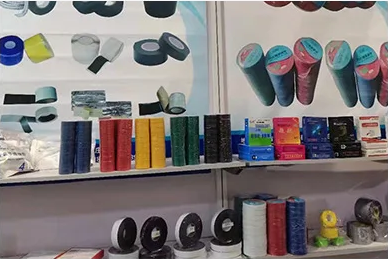The Price Dynamics of Rubber Tape Understanding Cost Factors and Market Trends
Rubber tape, a versatile and essential material in various industries, serves multiple purposes ranging from electrical insulation to automotive applications. As the demand for reliable and high-performance adhesive solutions continues to rise, it's crucial to explore the pricing dynamics that govern rubber tape in today's market. Understanding these factors can help consumers make informed decisions and manufacturers strategize effectively.
1. Composition and Manufacturing Process
One of the primary elements affecting the price of rubber tape is its composition. Rubber tape typically consists of a rubber substrate coated with a layer of adhesive, which can vary in formula depending on the intended application. For instance, high-temperature-resistant rubber tapes or those designed for harsh environmental conditions often utilize specialized materials, such as silicone or EPDM (ethylene propylene diene monomer) rubber. The complexity of the manufacturing process, which can involve advanced technology and extensive quality control measures, also contributes to the final cost.
2. Market Demand and Supply Factors
The demand for rubber tape is driven by several key sectors, including construction, automotive, and electrical industries. As these industries expand due to economic growth and increased infrastructure development, the demand for high-quality rubber tape follows suit. Conversely, fluctuations in supply can impact prices. For example, if there is a disruption in the supply chain due to natural disasters, geopolitical tensions, or raw material shortages, manufacturers may raise prices to manage scarce resources.
3. Technological Advancements
rubber tape price

Innovation in product development is another critical factor influencing rubber tape pricing. The introduction of new technologies and improved formulations has led to the creation of high-performance tapes that offer superior adhesion, flexibility, and temperature resistance. While these advancements can enhance the tape's functionality, they often come at a premium cost. However, the long-term benefits—such as increased durability and reduced maintenance expenses—can justify the higher initial price.
Geographical differences also play a significant role in rubber tape prices. Regions with robust manufacturing capabilities and abundant raw materials, such as Southeast Asia, often feature lower production costs, which can result in more competitive pricing. Conversely, in regions where rubber trees are scarce or where import duties on raw materials are high, prices may escalate. Additionally, local market conditions, including consumer preferences and competition among manufacturers, further influence the pricing landscape.
5. Environmental Considerations
The growing emphasis on sustainability and eco-friendly products has led to the emergence of green rubber tape options, which are made from recycled materials or sustainable sourcing. While these products cater to environmentally conscious consumers and businesses, they often come at a higher cost due to the complexities involved in sourcing sustainable materials and adhering to stringent production standards.
Conclusion
The price of rubber tape is a multifaceted issue shaped by various factors, including its composition, market demand, technological advancements, geographical considerations, and environmental impacts. As industries continue to evolve and prioritize sustainability, it is likely that we will see further fluctuations in pricing. For consumers, understanding these dynamics will be essential in navigating the market and making informed purchasing decisions. Whether for industrial applications or everyday use, rubber tape remains a crucial component in numerous sectors, and its price will continue to reflect the intricacies of the global supply chain and technological progress.
-
XIANGFAN Rubber Tape-Ultimate Solutions for All Your Insulation NeedsNewsJun.24,2025
-
XIANGFAN Rubber Tape-Protection for Industrial and Residential ApplicationsNewsJun.24,2025
-
XIANGFAN Rubber Tape: Superior Safety and Sealing for Demanding EnvironmentsNewsJun.24,2025
-
XIANGFAN Rubber Tape: Reliable Solutions for Every Electrical ChallengeNewsJun.24,2025
-
XIANGFAN Electrical & Industrial Tape: Powering Reliability Across IndustriesNewsJun.24,2025
-
XIANGFAN Electrical & Industrial Tape: Excellence in Every ApplicationNewsJun.24,2025
